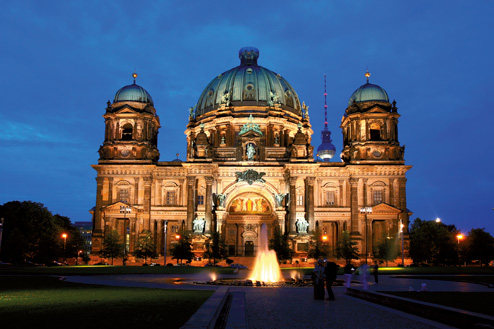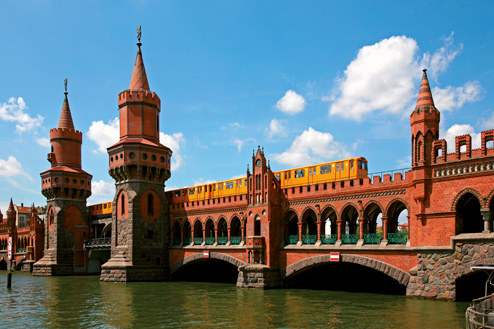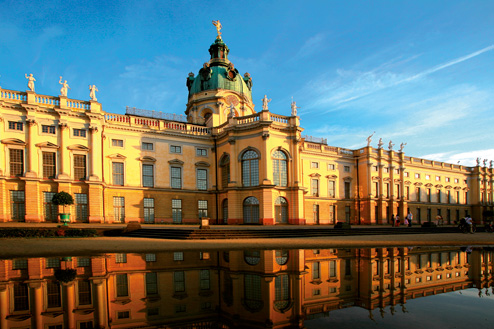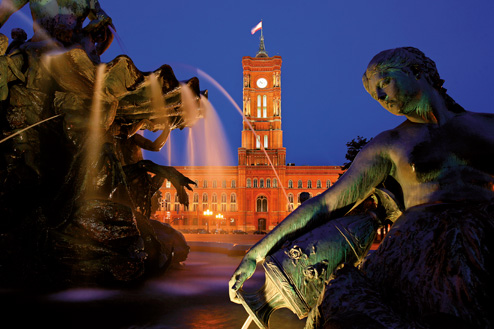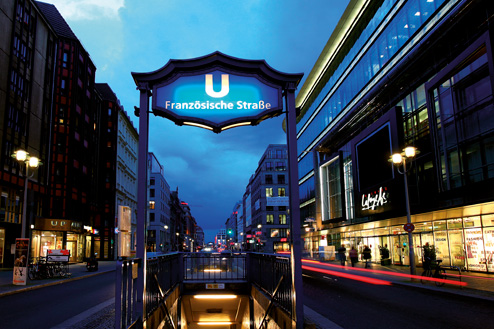Food & Drink
Berlin’s crowning contribution to German cuisine is a sausage smothered in curry sauce. The Currywurst might not be sophisticated, but if you know where to get a decent one, it can, at least, get you through lunch.
Berlin’s most famous liquid innovation – Berliner Weisse – regrettably isn’t something you’ll likely be clamouring for on a daily basis either. This sour wheat beer is treated to a shot of sweet raspberry or woodruff (Waldmeister) syrup for a red or green light drink most frequently consumed by tourists in the city’s beer gardens each summer.
Locals aren’t afraid to admit their culinary shortcomings, and although Berlin has yet to reach the kind of world-class dining seen in London, New York or Paris, the situation for foodies is definitely improving.
There is plenty of quality German and cosmopolitan options available throughout the city, but some of the most interesting cooking is being done by young, adventurous chefs coming up with modern fusion cuisine with a Teutonic twist. And Berlin has one advantage over those cities: eating here remains a remarkably affordable affair. If you’re spending more than €20 per person for your meal, you’re probably dining like royalty. Of course, you will pay much less at one of the city’s ubiquitous Turkish kebab shops with their sizzling and spinning spits of döner meat.
As far as cooking for yourself, Berlin’s supermarkets are divided into several upmarket, discount and organic chains, but even the cheap shops are stocking an ever-expanding assortment of organic food. Each spring, Berliners go nuts for the prized white asparagus and Spreewald gherkins grown in neighbouring Brandenburg. But there’s no reason to forgo fresh produce for the rest of the year, because there are weekly farmers’ markets scattered throughout the city and a Turkish market in Kreuzberg each Friday. If money is no object, visit the gourmet food sections at KaDeWe near Wittenbergplatz, Galeries Lafayette on Friedrichstrasse, and Kaufhof in Alexanderplatz.
Berlin’s most famous liquid innovation – Berliner Weisse – regrettably isn’t something you’ll likely be clamouring for on a daily basis either. This sour wheat beer is treated to a shot of sweet raspberry or woodruff (Waldmeister) syrup for a red or green light drink most frequently consumed by tourists in the city’s beer gardens each summer.
Locals aren’t afraid to admit their culinary shortcomings, and although Berlin has yet to reach the kind of world-class dining seen in London, New York or Paris, the situation for foodies is definitely improving.
There is plenty of quality German and cosmopolitan options available throughout the city, but some of the most interesting cooking is being done by young, adventurous chefs coming up with modern fusion cuisine with a Teutonic twist. And Berlin has one advantage over those cities: eating here remains a remarkably affordable affair. If you’re spending more than €20 per person for your meal, you’re probably dining like royalty. Of course, you will pay much less at one of the city’s ubiquitous Turkish kebab shops with their sizzling and spinning spits of döner meat.
As far as cooking for yourself, Berlin’s supermarkets are divided into several upmarket, discount and organic chains, but even the cheap shops are stocking an ever-expanding assortment of organic food. Each spring, Berliners go nuts for the prized white asparagus and Spreewald gherkins grown in neighbouring Brandenburg. But there’s no reason to forgo fresh produce for the rest of the year, because there are weekly farmers’ markets scattered throughout the city and a Turkish market in Kreuzberg each Friday. If money is no object, visit the gourmet food sections at KaDeWe near Wittenbergplatz, Galeries Lafayette on Friedrichstrasse, and Kaufhof in Alexanderplatz.

